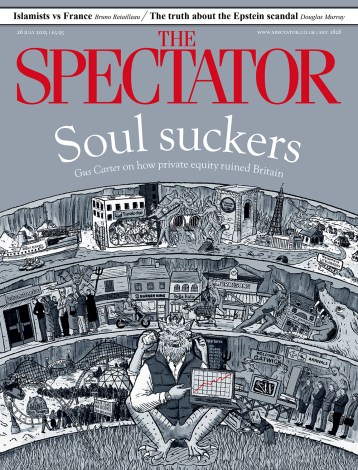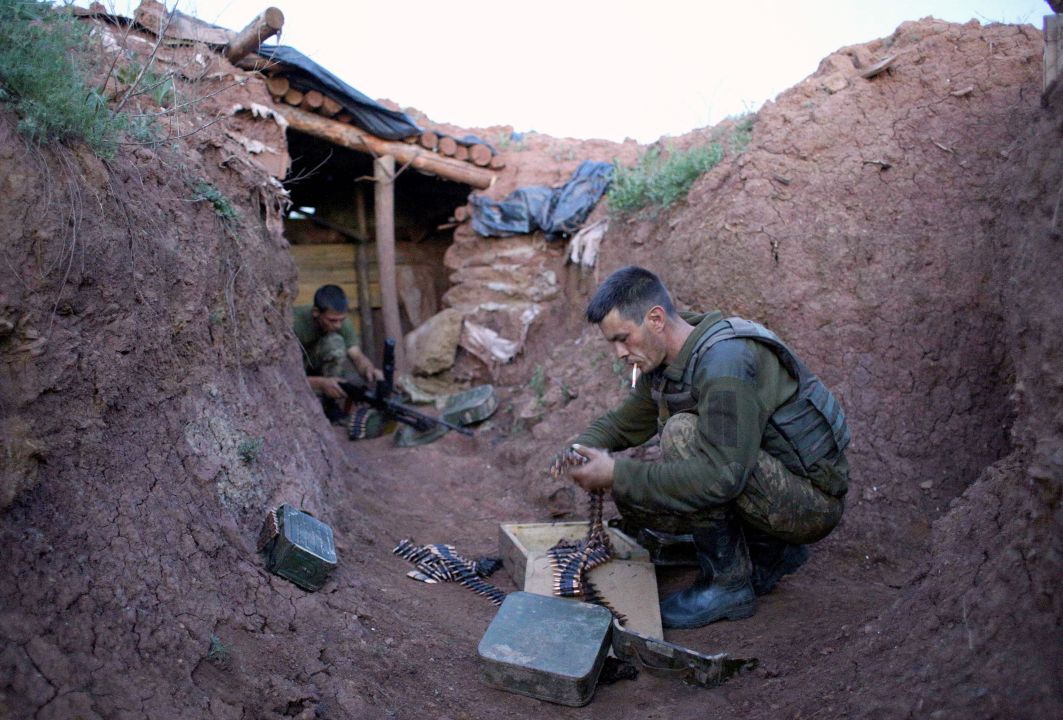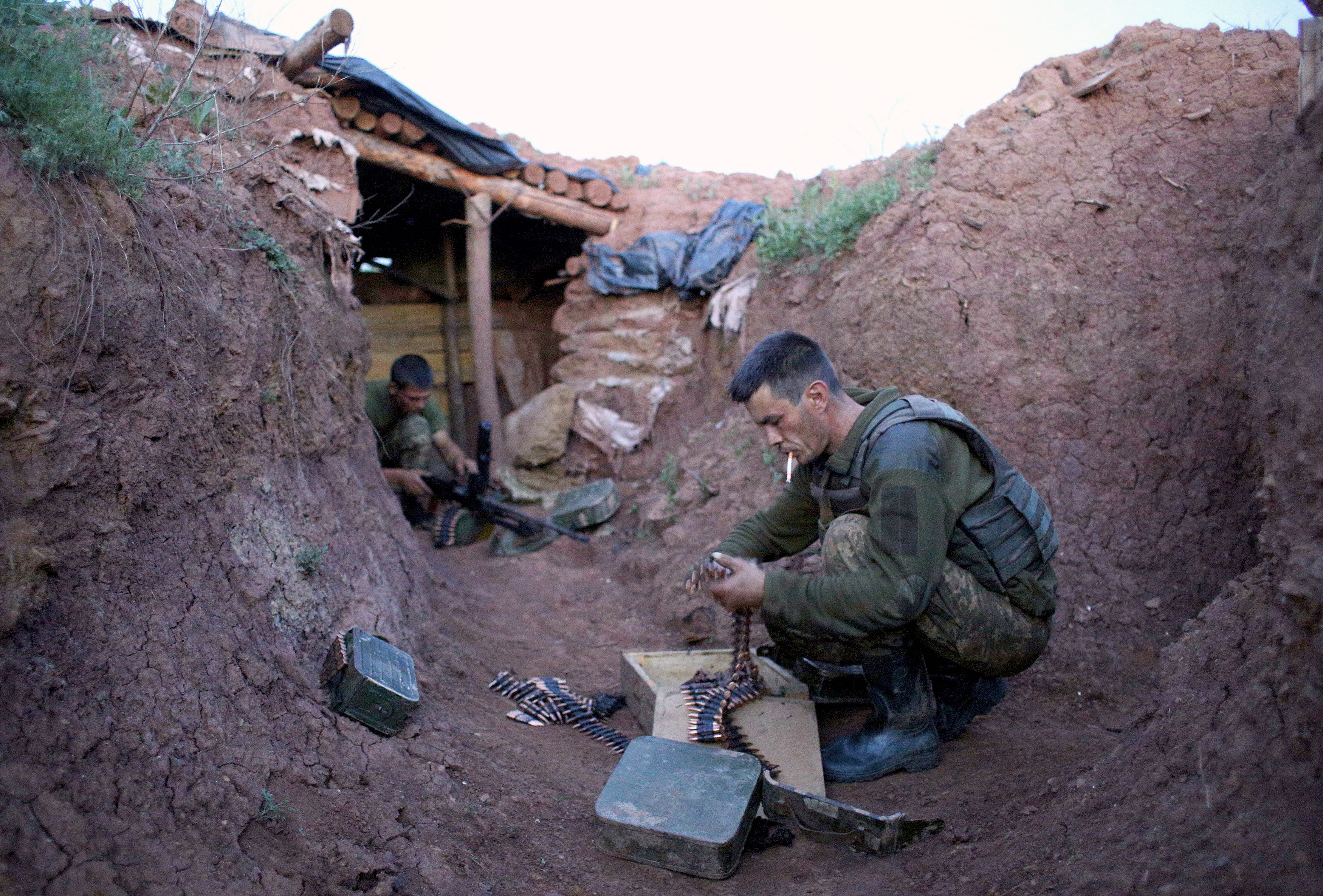With occasional artillery duels and sporadic exchanges of small arms fire, Ukraine’s long-running civil war was never quite extinguished. However, the embers of the last five years, which have seen dozens killed in skirmishes each month, could now reignite as eastern Ukraine risks becoming an open battleground once again.
Around 25,000 Russian troops have been positioned on Ukraine’s disputed borders, movements which were followed by artillery bombardments and firefights that have already resulted in casualties for both sides. Further escalation between Kiev and Moscow is now frighteningly possible. In previous cases, most notably Georgia in 2008, a sudden build-up of Russian forces signals the beginning of a carefully planned assault.
The fierce fighting between 2014 and 2016 saw cities ruined and vicious battles. Life in the east of the region never quite returned to normal after the 2014 revolution, in which the Moscow-aligned Viktor Yanukovych was ousted in favour of a pro-Western government. In Eastern Ukraine, this was viewed as a fascist takeover: many have a greater cultural affinity with Russia than with their own state. A majority of the populace speaks Russian rather than Ukrainian as a first language, and many more identify as ethnically Russians.
Western Ukrainians, meanwhile, saw their future in Europe. This idea was buoyed by the successes of some of their post-Soviet peers: the three Baltic states and Poland had already earned Nato and EU membership — widely seen as the best guarantors of safety from Russia — while Georgia was comfortably on the same path and already reaping significant economic benefits.
Ceasefires have been repeatedly signed and broken, the latest came a week ago when Ukrainian positions were shelled by separatist forces
As the government in Kiev declared its Western intentions, the Russophile east decided to secede. The newly-formed republics of Luhansk and Donetsk were equally inspired by their fellow former Soviets, only those to whom they looked for inspiration were the Kremlin-backed separatist regions of Abkhazia and South Ossetia in Georgia and Transnistria in Moldova.
Russia was seemingly glad to oblige these new unrecognised territories with the same aid it had given before, chiefly military. Yet the Kremlin recognised that it would need to be more careful in its handling of this new crisis. When invading Georgia in 2008 to support separatists in South Ossetia, Russia had sent its own troops in uniforms adorned with the white, blue and red tricolour. Securing the independence of the Donbas and the annexation of the Crimean peninsula required greater caution.
Kiev was, ostensibly, only fighting separatist forces troops. The Kremlin expressly denied the presence of Russian regulars and special operations personnel. Putin’s claims ensured plausible deniability but observers were quick to point out their obvious flaws. After all, while it may have been feasible for separatist troops to have access to Cold War-era weapons and equipment, kept in storage for a global war that never happened, it was considered highly improbably that they had managed to get their hands on the latest rifles, helmets and body armour — much of it the same equipment issued to Russia’s military elite vanguard forces.
The fighting, too, was different. This was not like the asymmetric campaigns of Afghanistan or Iraq, one side made up of locals with a few light firearms and improvised explosives, the other backed by cutting edge technology and modern weaponry. Indeed, on the front line at least, the battles felt more like traditional conflicts. In the words of Nicholas Waller, then a reporter with the Associated Press:
The war in the Donbas was a very surreal experience in that it was a conflict that seamlessly combined the worst elements of 20th century warfare onto a 21st century battlefield. There were countless times in 2014 and the winter of 2015 when you could be an eyewitness to scenes that would not have been out of place on the Western Front in world war one or the wasteland that was Grozny during the first Chechen war in the mid- 1990s.
While the fighting seemed conventional, the fighters themselves were not. The Ukrainian government’s paramilitary forces were swollen rapidly in the wake of the Euromaidan revolution. While many of these fighters were fuelled pro-Western ideals, not all were motivated by the notion of Ukrainian independence. Many of those who fought had little to do with Ukraine or Russia. Kiev’s Georgian contingent was particularly notable, made up of fighters who were returning the favour after Ukraine sent troops of its own to aid Georgia in its civil war. Many were settling scores sparked by the collapse of the Soviet Union. As Waller explains: ‘There Were Armenians and Azeris who were there to fight one another; Chechens to fight each other and the Russians’ Serbs and Croats who’d rekindle their hatred for one another after the Yugoslav wars; Georgians. Moldovans, Balts and Belarusians who’s decided the Donbas was a forum to air their grievances with Moscow.’ Ethnic divisions were not the only fuel for this semi-civil, semi-international war. Also present were European communists and revolutionary leftists who saw the conflict as a successor to the Spanish civil war.
And although the fiercest fighting eventually died down and settled into an uneasy stalemate, almost 50,000 people were killed with over a million displaced. The occasional artillery duels that followed resulted in a few deaths on both sides every year, a similar situation to that of the Nagorno-Karabakh region in Armenia, a land dispute that resulted in another bloody chapter at the end of last year when Azeri forces took territory from the predominantly Armenian region.
Ceasefires have been repeatedly signed and broken, the latest came a week ago when Ukrainian positions were shelled by separatist forces. This was followed by the heaviest fighting in several years, with firefights, armoured vehicles, and the ever-present menace of artillery resulting in the six deaths of Ukrainian service personnel and a number of civilian casualties.
Given they are already supported by the Russians, it might initially seem odd that the separatists are reportedly becoming more aggressive. It is not as though the breakaway republics are being threatened by Ukrainian forces preparing an assault. In fact, given the build-up of Russian forces, the story is quite the reverse. There are a number of possibilities.
The first could be designs on the port of Mariupol and the coastal region between the Russian-controlled Crimean peninsula and the separatist states. The city would serve as a vital land link between them; all prior attempts to capture the city have failed.
While these defeats of the past certainly give Putin and his allies a need to reassert themselves, so too does the war between Azerbaijan and Armenia, Russia’s ally. The Kremlin was caught off-guard by the Azerbaijani onslaught and its appeals for calm went largely unheeded — mostly because Azerbaijan was openly backed by Turkey. Although Ankara enjoys relatively friendly relations with Moscow — both benefiting from the other with equally antagonistic relations with the West — Turkey remains a competitor in the region and Putin is not likely to have been pleased with being put on the political back-foot.
Yet one area in which Putin can take inspiration from the latest war between Armenia and Azerbaijan was the tepid international reaction. The West, as ever, made its customary opening gambit of expressing ‘grave concern’ and calling for a ceasefire, which was equally customarily ineffective. Putin is well aware of how internally focused Europe and America have become, and Azerbaijan’s ability to carry out a substantial military campaign without Western political opposition will certainly be encouraging. Indeed, Baku only halted its efforts once Russia warned the Azeris that it would defend its Armenian allies. Ukraine does not enjoy that level of partnership or alliance with the West.
While any further escalation would naturally be disastrous for Ukraine, it will also be a stern test for Europe and the USA. The EU will certainly feel the strain, with Poland’s frequent warnings about Russian aggression being proven — warnings that have in recent years been pitted against German pleading for calm and hopes of a sudden, miraculous peace. In the White House, President Biden will have the chance to prove that he can live up to his campaign promise of being more confrontational to Putin than his predecessor — but whether he has the political will, or the nerve, to effectively counter Russian aggression can reasonably be doubted.







Comments